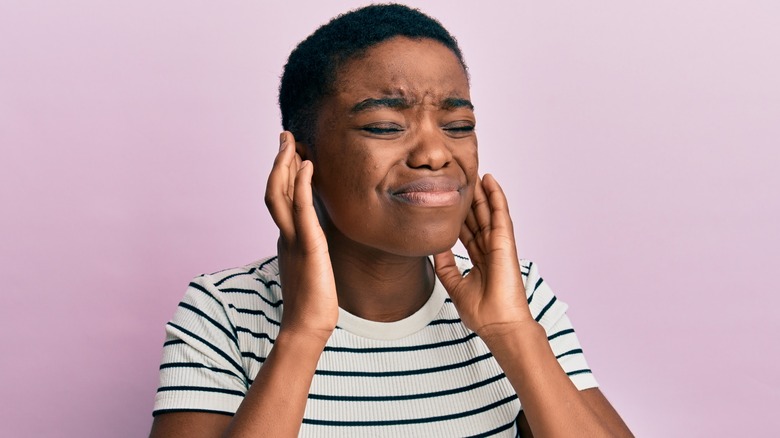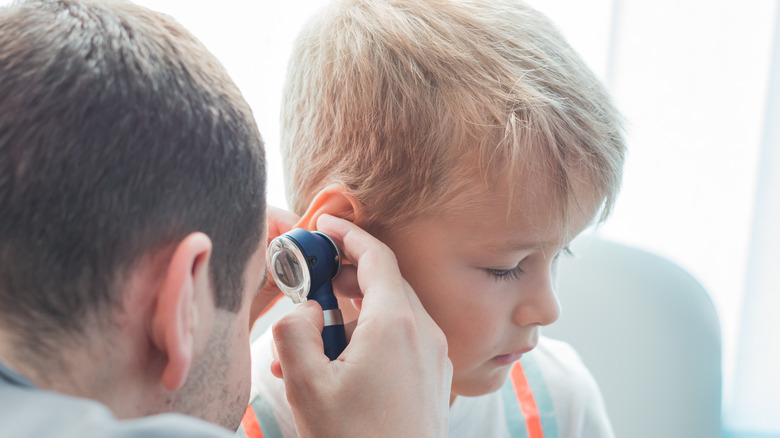What You Need To Know About Double Ear Infections
The pain of an ear infection can impact both adults and children alike. While observed less frequently as we grow older, approximately 20% of ear infections are experienced in adulthood, reports Houston Methodist. Conversely, The Harley Street Ear Nose & Throat Clinic says that roughly five out of every six kids are expected to have had one or more ear infections by the time they turn 3-years-old.
Most of us are familiar with a singular ear infection, or unilateral ear infection, in which fluid from viral or bacterial infection accumulates in the middle ear (via Healthline). In some cases, however, this buildup can occur in both ears, known as a double ear infection. Symptoms of unilateral ear infections and bilateral ear infections often present similarly, although they may be felt more intensely in the case of a double ear infection, reports Medical News Today. Such symptoms include ear pain, headache, trouble sleeping, hearing issues, ear drainage, and more. Healthline adds that those with a bilateral ear infection may also experience fever lasting more than 48 hours, or may have recently had an upper respiratory infection.
The thing to know about double ear infections, however, is that in some cases, they can be more serious than a singular ear infection.
When to seek medical care for a double ear infection
Most often, hearing issues related to double ear infections are generally short-lived and return to normal once the infection heals, reports Medical News Today. However, ear infections that continue to come back may result in permanent ear damage, a ruptured eardrum, or speech or developmental delays due to hearing loss. Healthline notes that those with recurrent ear infections are also at risk of the infection spreading, particularly to the skull bone located behind the ear, known as the mastoid. Should the mastoid become infected, it can potentially impact our brain and circulatory health.
For these reasons, Medical News Today emphasizes that it's important to be on the lookout for signs of double ear infections in young babies. This can include increased crying, irritability, fever, tugging on the ears, and decreased interest in feeding. At the onset of symptoms, children less than half-a-year old should see their pediatrician promptly.
For those with double ear infections, be sure to consult with your physician in the event that symptoms worsen or last for more than 24 hours. In addition, seek urgent medical attention if you notice blood or pus oozing from the ears, particularly if accompanied with fever.


